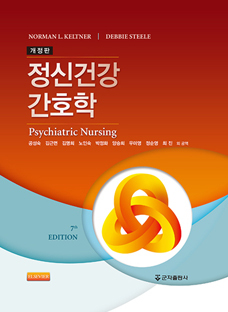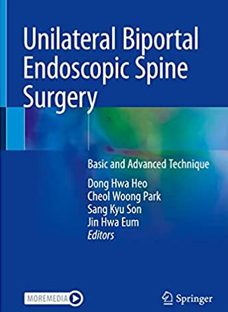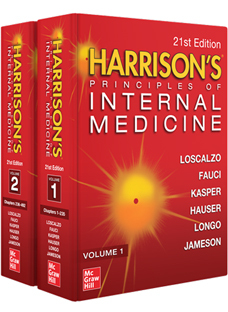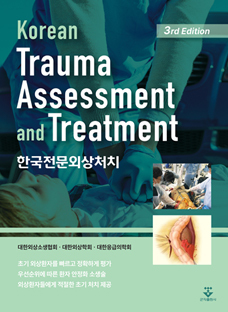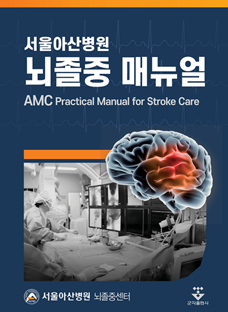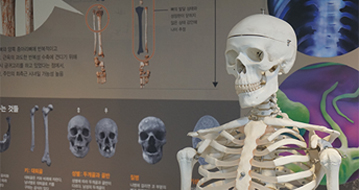List of Contributors xv
Introduction xix
Part I Principles of the Implementation of Change 1
1 Implementation of Change in Healthcare: A Complex Problem 3
Richard Grol and Michel Wensing
1.1 Introduction 3
1.2 The Implementation Problem 5
1.2.1 Effective Care 6
1.2.2 Safe Care 6
1.2.3 Efficient Care 7
1.2.4 Access to Care 8
1.2.5 Patient-Centered Care 8
1.2.6 Variation in the Provision of Care 8
1.3 Various Approaches to the Implementation of Change in Patient Care 9
1.4 What is Implementation? 12
1.5 Which Recommended Practices Should Be Adopted? 15
1.5.1 New Insights and Technologies 15
1.5.2 Problems in Healthcare Practice 16
1.6 A Systematic Approach to “Sustainable Change” 16
References 17
2 Theories on Implementation of Change in Healthcare 21
Michel Wensing and Richard Grol
2.1 Introduction 21
2.2 Theories on Factors Related to Individual Professionals 23
2.2.1 Cognitive Theories 23
2.2.2 Educational Theories 25
2.2.3 Motivational Theories 26
2.3 Theories on Social Processes 27
2.3.1 Social Learning Theory 27
2.3.2 Theories on Communication 27
2.3.3 Social Network Theories 28
2.3.4 Theories on Teamwork 29
2.3.5 Theories on Professionalization 29
2.3.6 Theories on Leadership 30
2.4 Theories on Organizational Systems 31
2.4.1 Theories of Effective Organizations 31
2.4.2 Theory of Quality and Safety Management 31
2.4.3 Theory of Operations Management 33
2.4.4 Theory of Complex Systems 33
2.4.5 Theory of Organizational Learning 34
2.4.6 Theories of Organizational Culture 35
2.5 Theories on Economic and Societal Structures 36
2.5.1 Economic Theories 36
2.5.2 Theories on Contracting 37
2.6 Conclusions 37
References 39
3 Effective Implementation of Change in Healthcare: A Systematic Approach 45
Richard Grol and Michel Wensing
3.1 Elements of Effective Implementation 45
3.2 The Implementation of Change Model 52
3.3 Developing a Proposal and Targets for Change 53
3.4 Assessment of Performance 55
3.5 Analysis of the Target Group and Setting 56
3.5.1 Aims and Settings of the Implementation 57
3.5.2 Segments within the Target Group and Stages of Change 57
3.5.3 Phases in a Process of Change: A Summary of the Literature 58
3.5.4 Orientation 59
3.5.5 Insight 59
3.5.6 Acceptance 59
3.5.7 Change 60
3.5.8 Maintenance 60
3.5.9 Barriers and Facilitators to Changing Practice 60
3.6 Selection and Development of Improvement Strategies 61
3.7 Development, Testing, and Execution of an Implementation Plan 61
3.8 Sustainable Change: Integration of Change into Practice Routines 63
3.9 Evaluation and (Possible) Adaptations to the Plan 63
3.10 Planning of the Implementation Process 66
3.11 Conclusions 68
References 68
4 Planning and Organizing the Change Process 73
Richard Grol and Michel Wensing
4.1 Introduction 73
4.2 A Motivated Team Comprising All Relevant Expertise 75
4.3 Creating a Context for Change 76
4.3.1 The Central Role of Physicians 76
4.3.2 Collaboration in Teams for Patient Care 78
4.4 Involving the Target Group and Stakeholders in the Plan 81
4.5 Leaders and Key Figures 81
4.5.1 Medical Leadership 82
4.6 Project Management: Time Schedule and Responsibilities 82
4.7 Resources and Support 83
4.8 Conclusions 84
References 84
Part II Guidelines and Innovations 87
5 Characteristics of Successful Innovations 89
Richard Grol and Michel Wensing
5.1 Introduction 89
5.2 Various Types of Improvements Require Various Types of Change Proposals 91
5.2.1 Scientific Literature, Guidelines, Decision Support, and Decision Aids 91
5.2.2 Clinical Pathways 92
5.2.3 Improved Care Processes 93
5.2.4 Other Innovations 93
5.3 Characteristics of Innovations That Promote Implementation 94
5.4 Format and Presentation 97
5.5 Involvement of the Target Group and Local Adaptation 99
5.6 Conclusions 100
References 100
6 Clinical Practice Guidelines as a Tool for Improving Patient Care 103
Jako Burgers, Trudy van der Weijden, and Richard Grol
6.1 Introduction 103
6.2 Aims of Guidelines 104
6.3 Potential Benefits and Limitations of Guidelines 105
6.3.1 Potential Benefits 106
6.3.2 Possible Limitations 106
6.4 Development of Effective Guidelines 107
6.4.1 Topic Selection 107
6.4.2 Composition of the Guideline Development Group 110
6.4.3 Patient and Public Involvement 111
6.4.4 Drafting the Scope 113
6.4.5 Development of Draft Guideline 114
6.4.6 Identifying and Reviewing Available Guidelines and Reviews 114
6.4.7 Collection and Evaluation of Scientific Evidence 115
6.4.8 Contribution of All Relevant Expertise and Experience 116
6.4.9 Formulation of Recommendations 116
6.4.10 Consultation and Authorization 118
6.4.11 Consultation 118
6.4.12 Pilot Testing 119
6.4.13 Authorization 119
6.4.14 Design of the Guideline and Related Products 119
6.4.15 Evaluation 120
6.4.16 Updating Guidelines 121
6.5 Quality of Guidelines and Guideline Development Programs 121
6.6 International Collaboration in Guideline Development 123
6.7 Conclusion 124
References 125
Part III Assessment of Performance 131
7 Indicators for Quality and Safety of Care 133
Jozé Braspenning, Rosella Hermens, Hilly Calsbeek, Stephen Campbell, Philip van der Wees, and Richard Grol
7.1 Introduction 133
7.1.1 Aim of the Assessment 135
7.2 Indicators for Quality and Safety of Care 137
7.2.1 Aims of Measurement 137
7.2.2 Domains and Perspectives 138
7.2.3 Categories of Indicators 138
7.3 Methods to Develop a Set of Indicators 140
7.4 Selecting or Developing a Preliminary Set of Indicators 140
7.4.1 Indicator Attributes 141
7.4.2 Number of Indicators 141
7.5 Finding Consensus among Target Users 141
7.5.1 Delphi Technique 142
7.5.2 RAND/UCLA Appropriateness Method 142
7.6 Testing the Indicators Empirically 144
7.6.1 Validity and Reliability 144
7.7 Create a Feedback Report 147
7.7.1 Calculating Indicators and Benchmarks 147
7.7.2 Formulating Aims of Improvement 147
7.8 Use and Effect of Quality Indicators 148
7.8.1 Unintended Effects 148
7.9 Conclusion 149
References 150
Part IV Problem Analysis 155
8 Determinants of Implementation 157
Michel Wensing and Richard Grol
8.1 Introduction 157
8.2 Analysis of Stakeholders 159
8.3 Determinants of Change 161
8.3.1 Individual Health Professional Factors 161
8.3.1.1 Cognitive Factors 161
8.3.1.2 Motivational Factors 162
8.3.1.3 Behavioral Factors (Routines) 163
8.3.2 Patient Factors 163
8.3.3 Professional Interactions 163
8.3.3.1 Team Processes 163
8.3.4 Professional Networks 164
8.3.5 Organizational Factors 165
8.3.5.1 Capacity for Organizational Change 165
8.3.6 Organizational Structure 165
8.3.7 Organizational Culture 166
8.3.8 Availability of Necessary Resources 166
8.3.9 Societal Factors 166
8.3.9.1 Health Professions 166
8.3.9.2 Financial Incentives and Disincentives 167
8.3.9.3 Legislation 167
8.4 Subgroups in the Target Population 167
8.5 Conclusions 168
References 168
9 Methods to Identify and Analyze Determinants of Implementation 173
Michel Wensing and Richard Grol
9.1 Introduction 173
9.2 Interviews 175
9.2.1 Individual Interviews 175
9.2.2 Group Interviews 175
9.3 Surveys 177
9.3.1 Questionnaires about Clinical Guidelines 178
9.3.2 Questionnaires on Theory-Based Determinants of Implementation 178
9.4 Observation 180
9.4.1 Routinely Collected Data 180
9.4.2 Direct Observation 180
9.5 Data Analysis 181
9.5.1 Scientific Methods of Data Analysis 182
9.5.2 Quality Improvement Methods 183
9.5.3 Paretogram 183
9.5.4 Fishbone Diagram 184
9.5.5 Flow Chart 185
9.6 Prioritization and Goal Setting 186
9.7 Conclusions 186
References 187
Part V Strategies for Change 189
10 Selection of Strategies for Improving Patient Care 191
Richard Grol and Michel Wensing
10.1 Introduction 191
10.2 Methods to Select and Develop Implementation Strategies 192
10.2.1 Explorative Methods 194
10.2.2 Theory-Based Methods 196
10.3 Classification of Implementation Strategies 196
10.4 Implementation Strategies in the Different Phases of Change 199
10.4.1 Orientation 200
10.4.2 Insight and Understanding 200
10.4.3 Acceptance 201
10.4.4 Change 201
10.4.5 Maintenance 202
10.5 Subgroups within the Target Group 202
10.6 The Effectiveness of Different Strategies and Interventions 203
10.7 Conclusions 204
References 205
11 Dissemination of Innovations 207
Richard Grol and Michel Wensing
11.1 Introduction 207
11.2 Mass Media Approach 210
11.2.1 Written Materials 210
11.2.2 Internet-Based Approaches 210
11.2.3 Factors Associated with the Impact of Mass Media Strategies 212
11.3 Personalized Approaches 213
11.3.1 CME Courses and Conferences 214
11.3.2 Social Networks 214
11.3.3 Influential Individuals 215
11.3.4 Personal Introduction in Practice 216
11.4 Conclusion 217
References 218
12 Educational Implementation Strategies 221
Michel Wensing, Cornelia Fluit, Jeremy Grimshaw, and Richard Grol
12.1 Introduction 221
12.2 Types of Educational Strategies 223
12.3 Effectiveness of Education 224
12.3.1 Educational Materials 225
12.3.2 Educational Meetings 225
12.3.3 Outreach Visits 226
12.3.4 E-learning 226
12.4 Determinants of the Effectiveness of Education 227
12.4.1 Targets for Education 228
12.4.2 Active Participation 229
12.4.3 Duration of Education 229
12.4.4 Opinion Leaders 229
12.4.5 Assessment and Feedback 230
12.5 Discussion and Conclusions 230
References 231
13 Clinical Performance Feedback and Decision Support 235
Noah Ivers, Benjamin Brown, and Jeremy Grimshaw
13.1 Introduction 235
13.2 Definitions, Characteristics, and Components 238
13.2.1 Feedback 238
13.2.2 Decision Support 238
13.3 Effectiveness of Feedback and Decision Support 239
13.4 Factors Associated with Effects 241
13.4.1 Underlying Assumptions, Relevant Theories, and Mechanisms 241
13.4.2 Factors Associated with Effects 242
13.5 Discussion and Conclusions 246
References 248
14 Engaging Patients in Healthcare Improvement and Innovation 253
Glyn Elwyn and Amy Price
14.1 Introduction 253
14.2 Impact of Patient Engagement on Direct Care 254
14.2.1 Well-Established Conceptual Frameworks 254
14.2.2 Persistent Theory–Practice Gap 255
14.2.3 Broader Impacts 256
14.3 Impact of Patient Engagement on Organizational Design and Governance 257
14.4 Impact of Patient Engagement in Policy Making 259
14.5 Conclusion 260
References 260
15 Organizational Implementation Strategies 263
Michel Wensing, Miranda Laurant, and Richard Grol
15.1 Introduction 263
15.2 Revision of Professional Roles 264
15.3 Enhanced Patient Care Teams 266
15.4 Knowledge Management (Use of IT) 267
15.5 Integrated Care Systems 269
15.6 Quality and Safety Management 271
15.7 Conclusions 272
References 272
16 Patient Safety Strategies 275
Marieke Zegers, Mirelle Hanskamp-Sebregts, Hub Wollersheim, and Charles Vincent
16.1 Introduction 275
16.2 Definition of Patient Safety Concepts 276
16.3 Strategies to Measure Patient Safety 277
16.4 Patient Safety Improvement Strategies 280
16.4.1 Teamwork Training 280
16.4.2 Improved Handovers 280
16.4.3 Rapid Response Team 285
16.4.4 Infection Prevention 285
16.4.5 Delirium Prevention 286
16.4.6 Fall Prevention 287
16.4.7 Pressure Ulcers 287
16.4.8 Pain Management 287
16.4.9 Interventions to Prevent Adverse Drug Events 288
16.5 Strategies to Assure Patient Safety 289
16.5.1 Leadership 289
16.5.2 Safety Culture 290
16.5.3 Governance 290
16.6 Conclusions 292
References 292
17 Health System Strategies for Implementation 299
Michel Wensing, Holger Pfaff, and Richard Grol
17.1 Introduction 299
17.2 Strategies to Enhance Evidence-Based Policy Making 300
17.3 Scaling Up Interventions and Practices 303
17.4 Changes in the Financial Reimbursement of Healthcare Providers 304
17.5 Changes in the Financial Risk for Patients 306
17.6 Changes in the Healthcare System 307
17.7 Conclusions 309
References 309
18 Multifaceted Implementation Strategies 313
Marlies Hulscher and Michel Wensing
18.1 Introduction 313
18.2 Strategies in Multifaceted Implementation Strategies 314
18.3 Effectiveness of Multifaceted Implementation Strategies 320
18.4 Tailoring in Multifaceted Strategies 320
18.5 Volume and Classification of Strategies 321
18.6 Combinations of Specific Strategies 322
18.7 Conclusions 324
References 325
Part VI Organization and Evaluation 329
19 Planning of Implementation 331
Richard Grol
19.1 Introduction 331
19.1.1 Planning of the Implementation Process 334
19.2 Development of the Plan According to Phases in the Change Process 334
19.3 Planning of Activities for Different Levels of Care 336
19.4 Planning of Activities over Time 337
19.5 Incorporating the Implementation Plan into Existing Activities 337
19.6 Testing of the Implementation Strategies 338
19.7 Setting Goals for Evaluation 339
19.8 Integration and Embedding of New Practice into Routines and Organization 340
19.9 Conclusions 342
References 343
20 Experimental Designs for Evaluation of Implementation Strategies 345
Michel Wensing and Jeremy Grimshaw
20.1 Introduction 345
20.2 Experimental Study Designs 347
20.2.1 Pragmatic versus Explanatory Trials 348
20.2.2 Cluster Randomization 348
20.2.3 Options for Choice of Study Groups 349
20.2.4 Block Designs 349
20.2.5 Allocation of Participants to Study Arms 350
20.3 Outcome Measures and Data-Collection Methods 351
20.4 Statistical Power and Data Analysis 353
20.5 Regulatory and Ethical Considerations 354
20.6 Conclusion 354
References 355
21 Observational Evaluation of Implementation Strategies 357
Michel Wensing and Jeremy Grimshaw
21.1 Introduction 357
21.2 Designs for Observational Evaluations 358
21.3 Cross-Sectional Studies 359
21.4 Before–After Comparisons 359
21.5 Controlled Before–After Comparisons 361
21.6 Multiple Case Studies 363
21.7 Developmental Research 364
21.8 Data Analysis in Observational Evaluation Designs 365
21.9 Conclusions 366
References 366
22 Process Evaluation of Implementation Strategies 369
Marlies Hulscher and Michel Wensing
22.1 Introduction 369
22.2 Frameworks for Process Evaluation 370
22.3 Process Evaluation and Implementation Strategies 372
22.3.1 Evaluation of Pilots and Small Improvement Projects 373
22.3.2 Evaluation of Strategies in Experimental Designs 373
22.3.3 Evaluation of Improvement Programs in Observational Designs 374
22.4 Assessing the Fidelity of Implementation Strategies 374
22.5 Framing Process Evaluations 378
22.6 A Practical, Step-wise Approach to Process Evaluation 381
22.6.1 Step 1: Analysis of Implementation Strategy as Planned 381
22.6.2 Step 2: Assessment of Intervention Fidelity 382
22.6.3 Step 3: Assessment of Participant Experiences 383
22.6.4 Step 4: Exploration of Working Mechanisms 384
22.7 Conclusions 385
References 386
23 Economic Evaluation of Implementation Strategies 389
Johan L. Severens, Ties Hoomans, Eddy Adang, and Michel Wensing
23.1 Introduction 389
23.2 The Basics of Economic Evaluation 390
23.2.1 Definition of Cost-Effectiveness 391
23.3 Types of Economic Evaluation 392
23.4 Policy Cost-Effectiveness 395
23.5 Framing Economic Evaluations 396
23.5.1 Choice of Comparator 396
23.5.2 Time Horizon of a Study 396
23.5.3 Study Perspective 396
23.6 Cost Analysis 398
23.6.1 Directly Attributable, Indirectly Attributable, Fixed, and Variable Costs 398
23.6.2 Categories of Costs 399
23.6.3 Volumes and Cost Prices 400
23.7 Sensitivity Analysis, Quantitative Modeling, and Budget Impact 402
23.7.1 Sensitivity Analysis 402
23.7.2 Quantitative Modeling 403
23.7.3 Budget Impact Analysis 404
23.8 Ex Post Evaluation of the Efficiency of Implementation 405
23.9 Conclusions 405
References 406
Index 409

